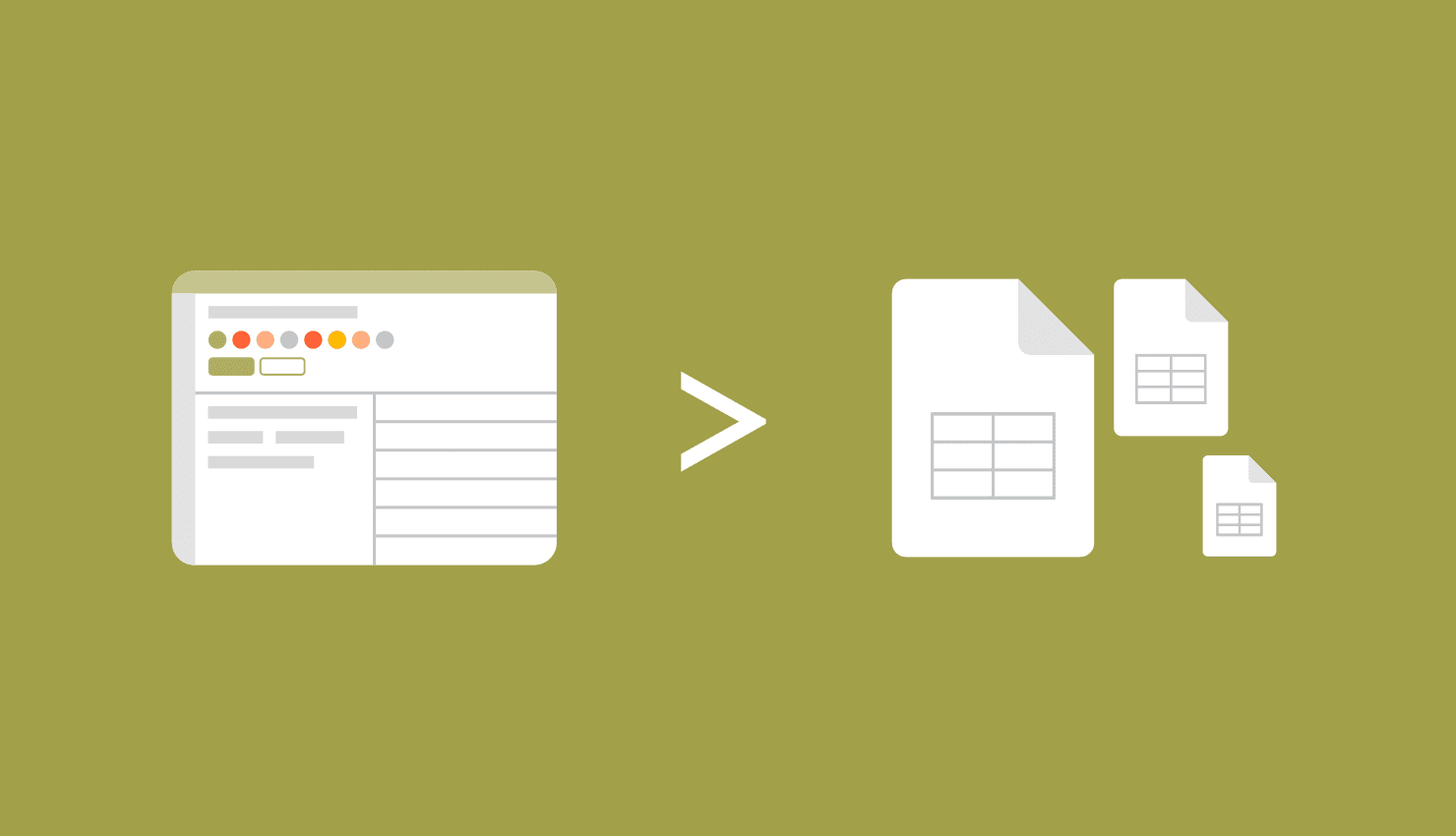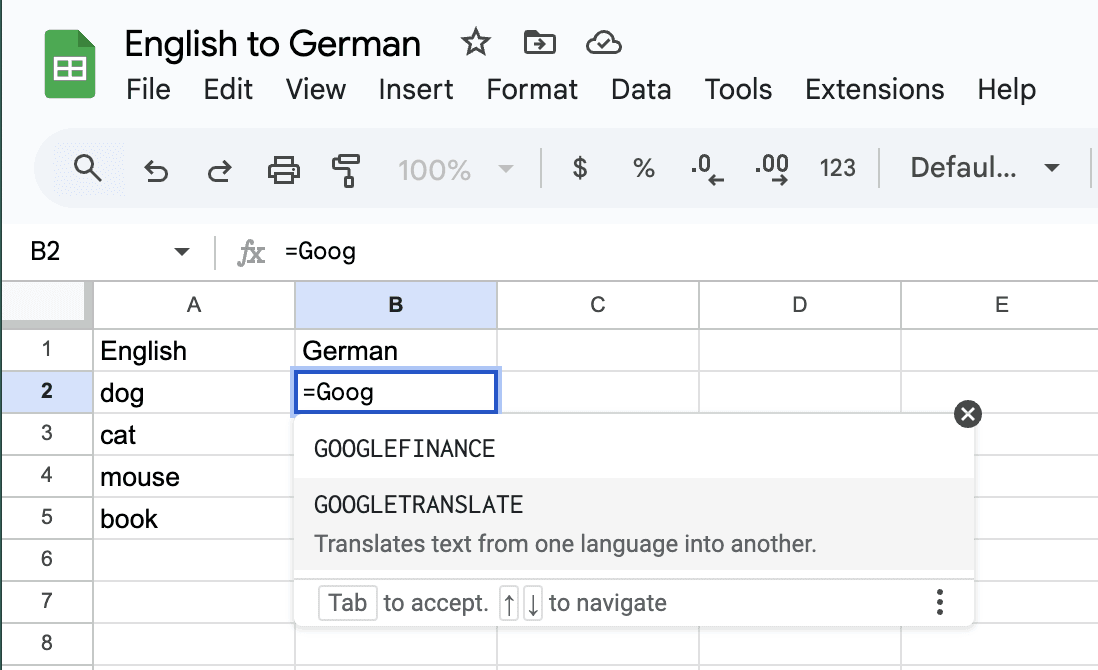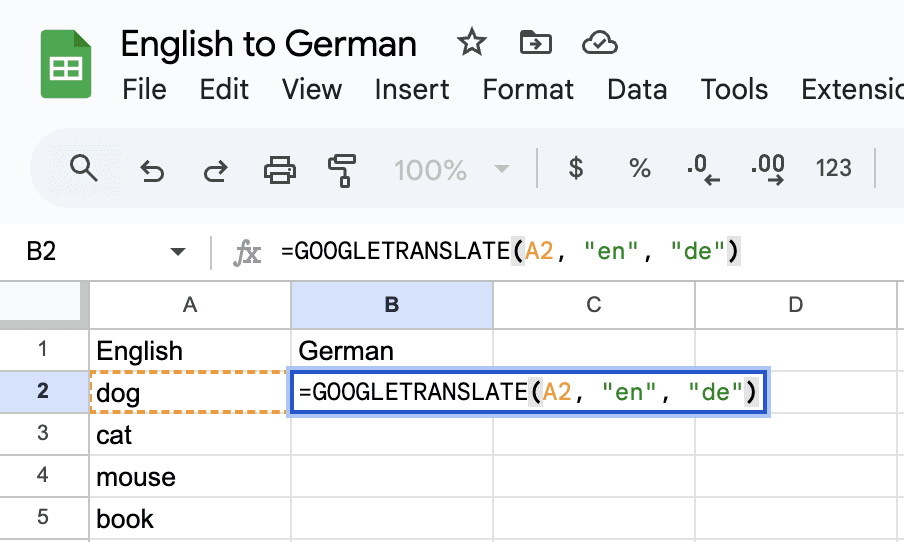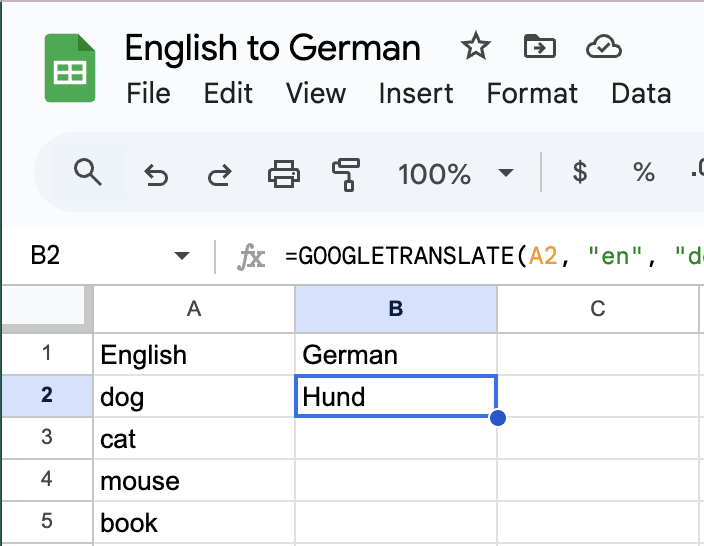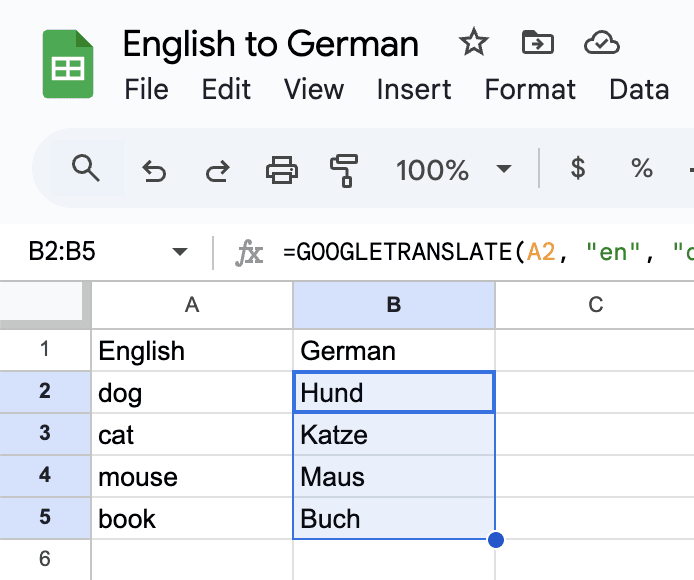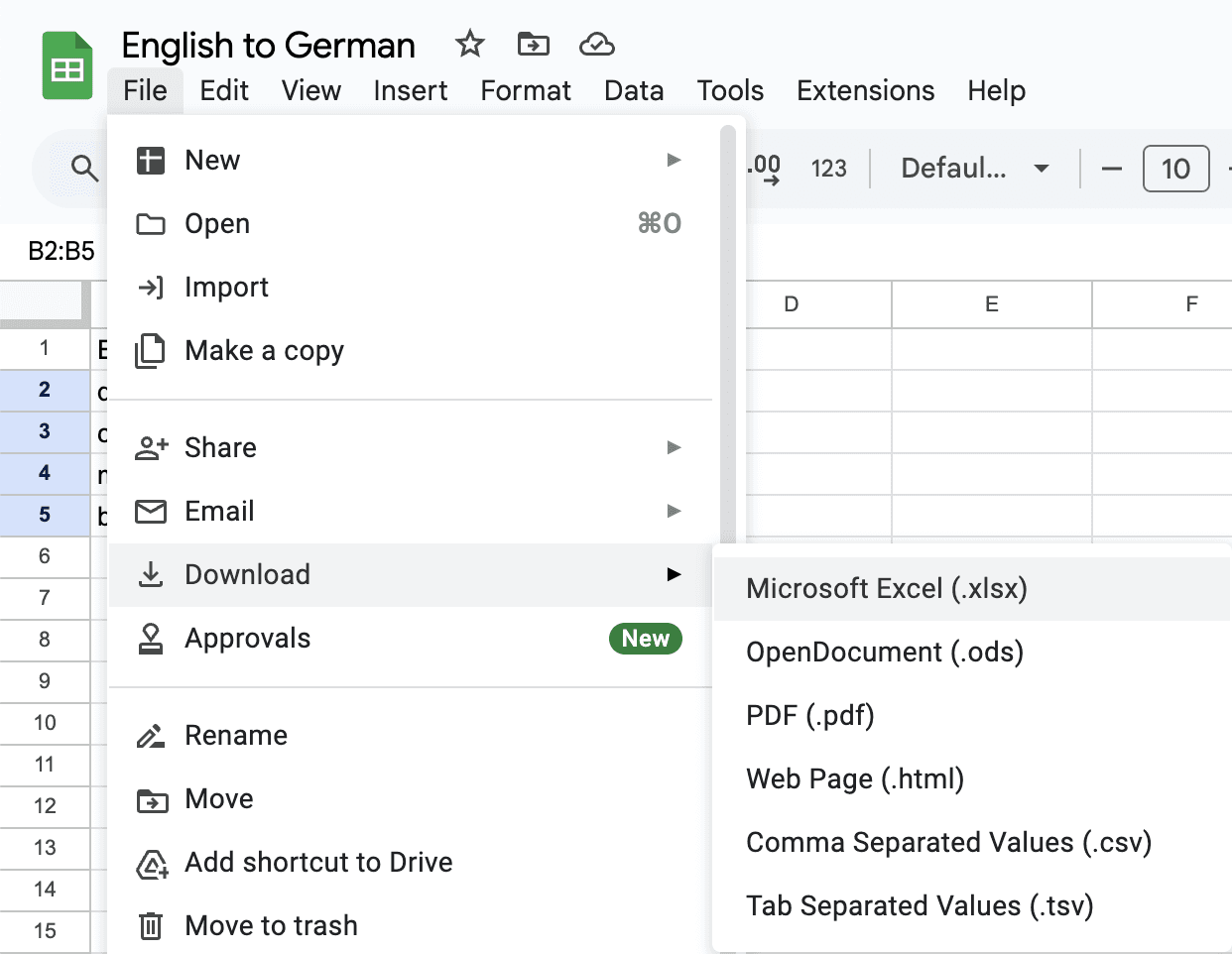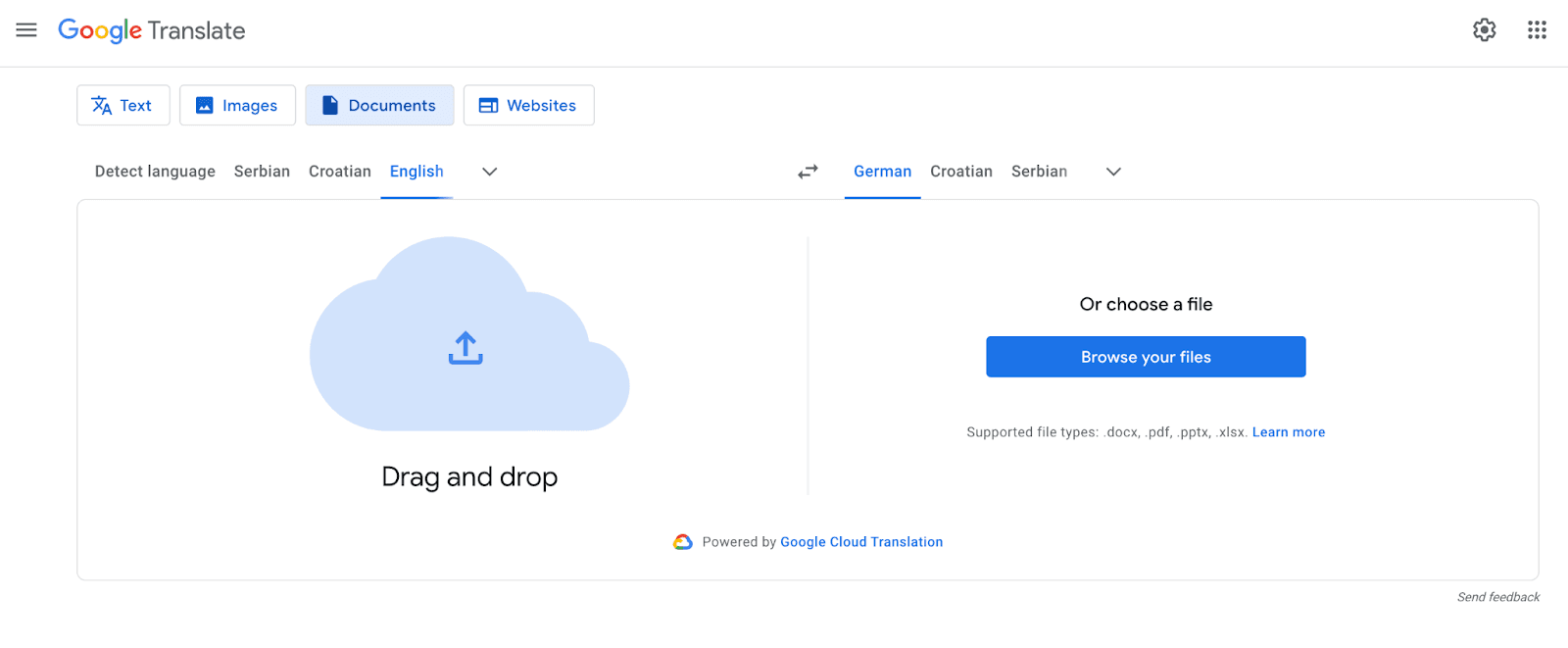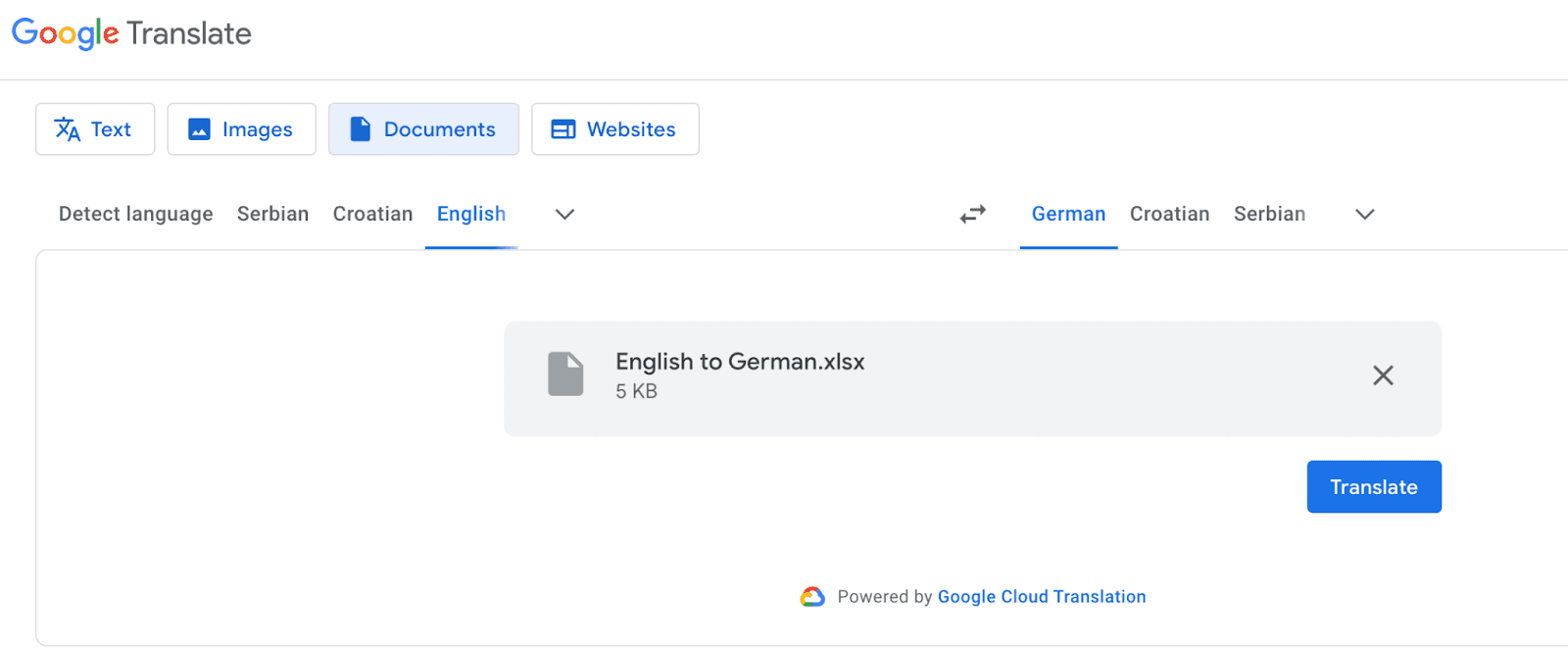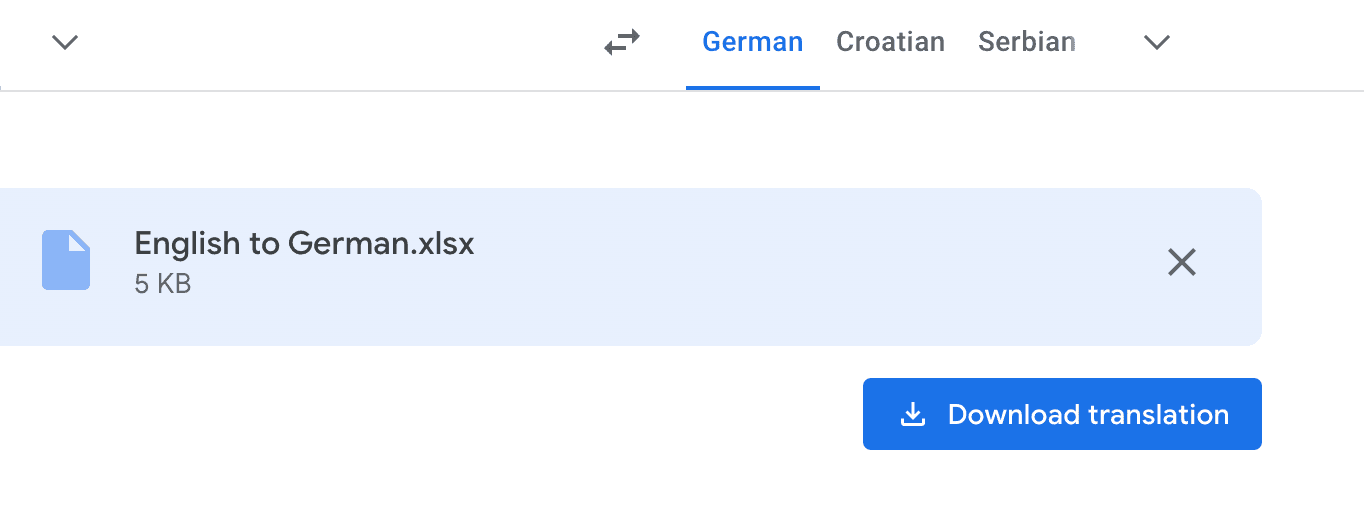Limitations
Machine translation tools work well for simpler projects. However, for more complex translation projects, it might be a good idea to pair them with a localization platform like Lokalise. This is how you’ll ensure accuracy and manage .xls translation more efficiently.
How to translate .xls files using Lokalise
Excel files are commonly used for managing localization data. It’s a go-to format for handling large volumes of translation strings and their corresponding metadata.
Lokalise supports both .xls and .xlsx formats, allowing seamless integration of your Excel files for localization management. Let’s take a closer look to see how it works.
When preparing translations for uploading in Excel format to Lokalise, you have two options:
- One file — one language
- One file — multiple languages (multilingual Excel file)
Let’s see how you can upload one file with a single language to translate it into another one.
Translating from one language to another with Lokalise
Step 1: Organize your content by creating a separate file for each language.
The rule is simple: one file, one language. To make things easier, name the files using locale codes like en for English, de for German, or fr for French. This way, Lokalise can quickly recognize and assign the correct language.
Step 2: Check your formatting
Your Excel file should contain the following columns:
- Key name (required)
- Translation (optional)
- Description (optional)
- Comment (optional)
Here is an example of a properly formatted Excel file with two translation keys (welcome and country):

Step 3: Upload the file to Lokalise and specify what data each column contains (this is optional)
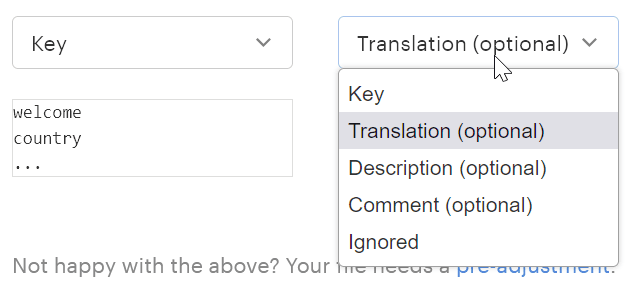
Step 4: Click “Apply” and “Import files” once you’re ready.

Step 5: Translate content
You can hire professional translators directly within Lokalise, or have your own linguists or LSP translate content.
You can also use Lokalise AI for unrivaled machine translation. It helps you translate 8x faster while helping you save up to 70% on translation costs.
Step 6: Download translations
To download translations in Excel format, proceed to the Download page in Lokalise and choose Excel from the Format dropdown:
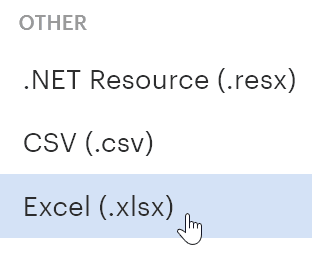
After the download is completed, translations for different languages will be placed into separate files. Easy-peasy.

